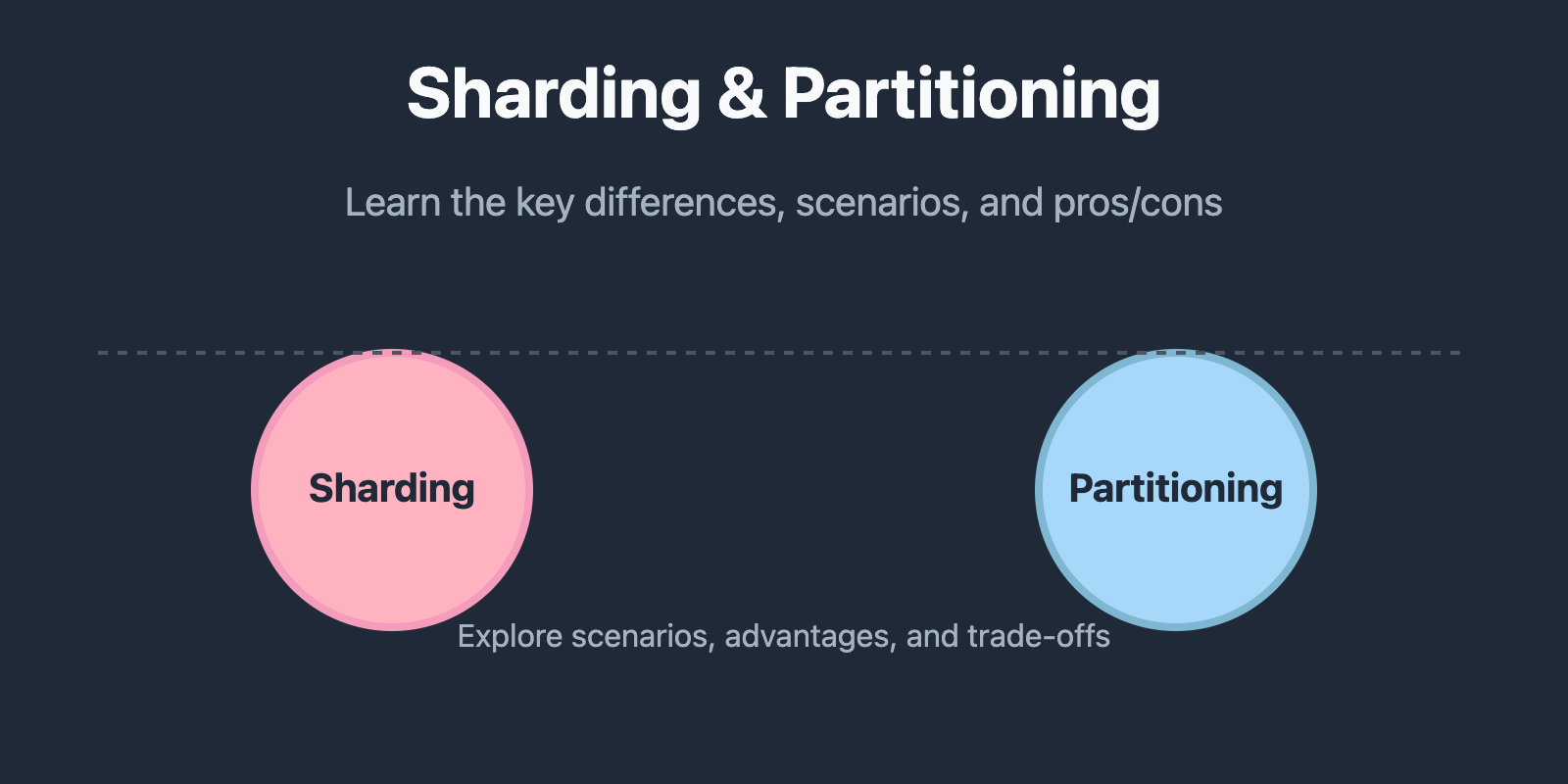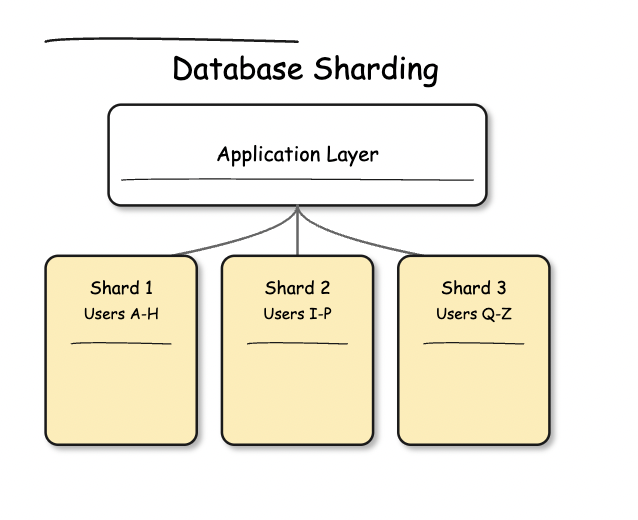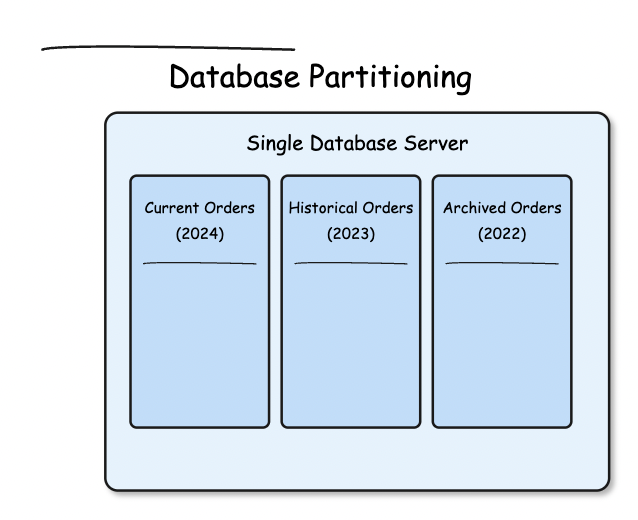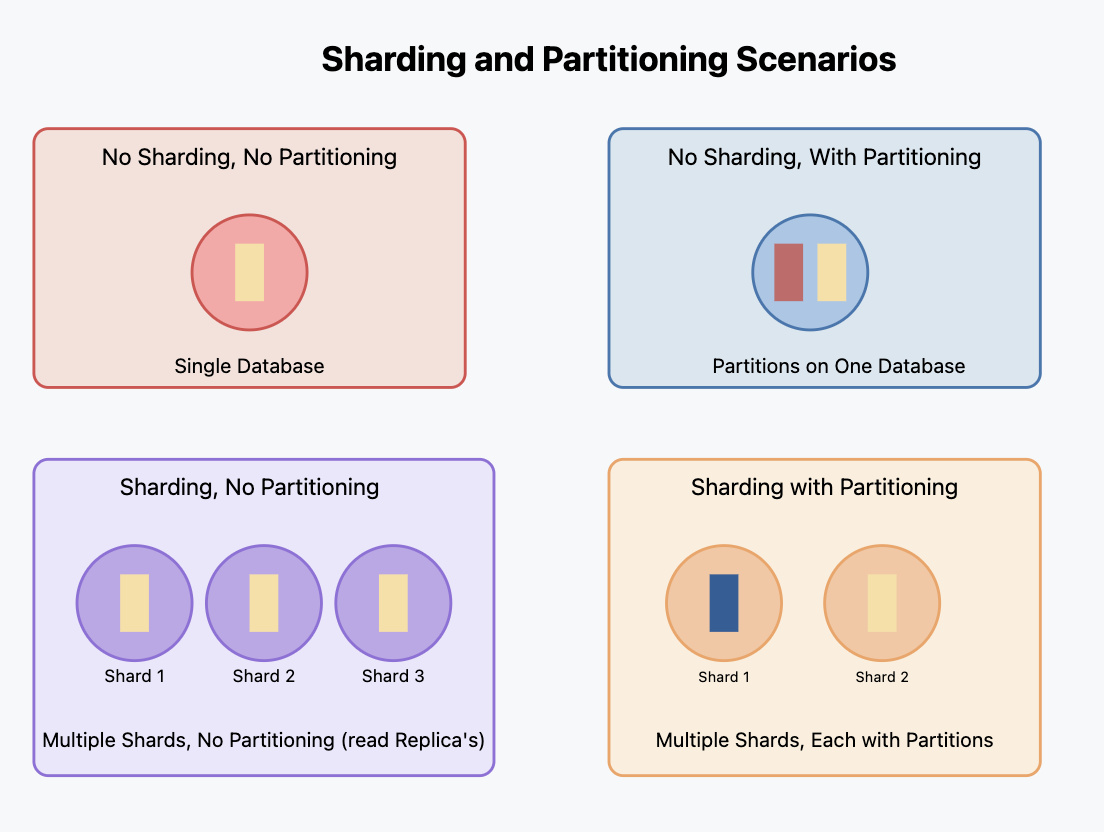Sharding vs Partitioning: The Key Difference You Need to Know!
 Mehul Kiran Chaudhari
Mehul Kiran Chaudhari
When it comes to managing large databases, terms like "sharding" and "partitioning" are often used to describe ways of breaking up data for better performance and scalability. But here's the catch: while these two concepts might sound similar, they are not the same—and mixing them up can lead to confusion🤯. In this post, we’ll explore the key difference between sharding and partitioning, why it’s important to understand each, and how making the right choice can help optimize your database 📈. Let’s get started! 🚀
Sharding:
Sharding involves using multiple database servers. These servers can either have identical copies of the data (read replicas) or the data can be partitioned and distributed across different servers. The goal is to distribute the workload and improve database performance by spreading the data out.
The main benefit of sharding is that it helps spread the workload, improving performance and making the database more scalable 📊.
Advantages:
Handles large reads and writes.📝
Increased store capacity.📦
Disadvantages
Cross shard queries are expensive.

Partitioning:
Partitioning is a way to divide your data into smaller, more manageable sections. You might use partitioning when your database is large, but you still want to keep it on fewer servers.

There are two main types:
Horizontal Partitioning
This involves splitting data by-row. You divide a table into different sections, with each section containing some of the rows. Horizontal partitioning helps with better query performance by keeping related data together.Pro: Faster queries by keeping related data in the same partition.
Con: Uneven load if data isn’t split properly.
Vertical Partitioning
This splits data by column. You might move columns that are rarely used into different partitions. Vertical partitioning can improve performance by reducing the amount of data you need to scan for certain queries.
Pro: Improves storage and performance by separating frequently used columns.
Con: Complexity increases when joining data from multiple partitions.
All Possible Sharding and Partitioning Scenarios
To make things clearer, here’s a quick diagram showing the different ways sharding and partitioning can be set up

That's a bit about sharding and partitioning! 🎉 Hope you enjoyed learning about these essential database concepts 😊 Remember, the right choice depends on your application's needs and data structure.
Subscribe to my newsletter
Read articles from Mehul Kiran Chaudhari directly inside your inbox. Subscribe to the newsletter, and don't miss out.
Written by

Mehul Kiran Chaudhari
Mehul Kiran Chaudhari
Software Engineer | ReactJS | NextJS | TypeScript | JavaScript.